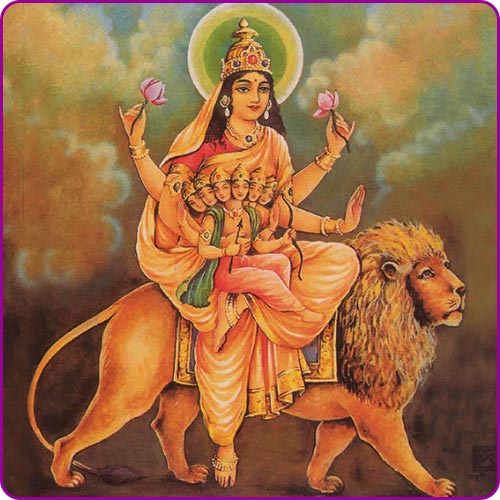Navaratri is a nine-night festival that is celebrated in honor of the Hindu goddess Durga. It is a time of vibrant celebrations, devotion, and spirituality. Each day of Navaratri holds unique significance, rituals, and stories associated with it. In this blog post, we will be exploring the importance of Day 5 of Navaratri and the exciting festivities that take place during this auspicious time.
Navaratri Day 5: The Celebration of Skanda Mata
Significance of Day 5
- On the fifth day of Navaratri, devotees worship Skanda Mata, the mother of Lord Kartikeya, also known as Skanda or Murugan. She is a depiction of divine feminine energy, portrayed as a serene goddess holding her son Kartikeya on her lap.
- Skanda Mata is often portrayed riding a lion, which symbolizes her strength and courage. The fifth day holds great significance as it celebrates the special bond between a mother and child, motherhood, and nurturing.
- Skanda Mata is a symbol of motherly love, protection, and power. Devotees believe that by worshipping her on this day, they can seek her blessings for the well-being and success of their children.
- Her love and protection for her son, Kartikeya, is a representation of the unconditional love between a mother and child. Her divine energy is believed to strengthen the bond between mother and child and provide them with the courage and strength to face any challenges in life.
Celebrations on Day 5
- Pooja and Offerings: Devotees wake up early in the morning and offer prayers to Skanda Mata. In addition to flowers and sandalwood paste, vermilion is applied to the idol or image of the goddess. Offerings like fruits, sweets, and coconut are made to seek her blessings.
- Fasting: Many devotees observe fasts on this day as a mark of devotion and to purify their minds and bodies. Fasting during Navaratri is a way to connect with the divine and practice self-discipline.
- Mantras and Chants: Mantras dedicated to Skanda Mata are chanted throughout the day. Devotees sing hymns and recite verses from sacred texts to invoke her presence and receive her blessings.
- Cultural Performances: In some regions, cultural programs and dance performances are organized to celebrate the divine feminine energy. Dances like Garba and Dandiya Raas are performed during Navaratri, showcasing the rich cultural diversity of India.
- Community Gatherings: People often come together in communities and temples to participate in the festivities. This sense of togetherness fosters a feeling of unity and devotion.
- Red Color: The color red is associated with Skanda Mata. Devotees often wear red clothes and decorate their homes with red flowers to symbolize her energy and love.
- Blessings for Children: Parents seek blessings for the well-being and success of their children from Skanda Mata. It is believed that her grace ensures the protection and guidance of children.
- Charitable Acts: Many devotees take this opportunity to engage in acts of charity and kindness, reflecting the motherly love and compassion associated with Skanda Mata.
On Navaratri Day 5, we pay homage to Skanda Mata, celebrating motherhood, nurturing, and the divine relationship between a mother and her child. It is a day of devotion, fasting, prayers, and cultural festivities that unite communities. Through these rituals, devotees seek the blessings of Skanda Mata for the prosperity and success of their children, fostering a sense of love and harmony in the spirit of Navaratri.




